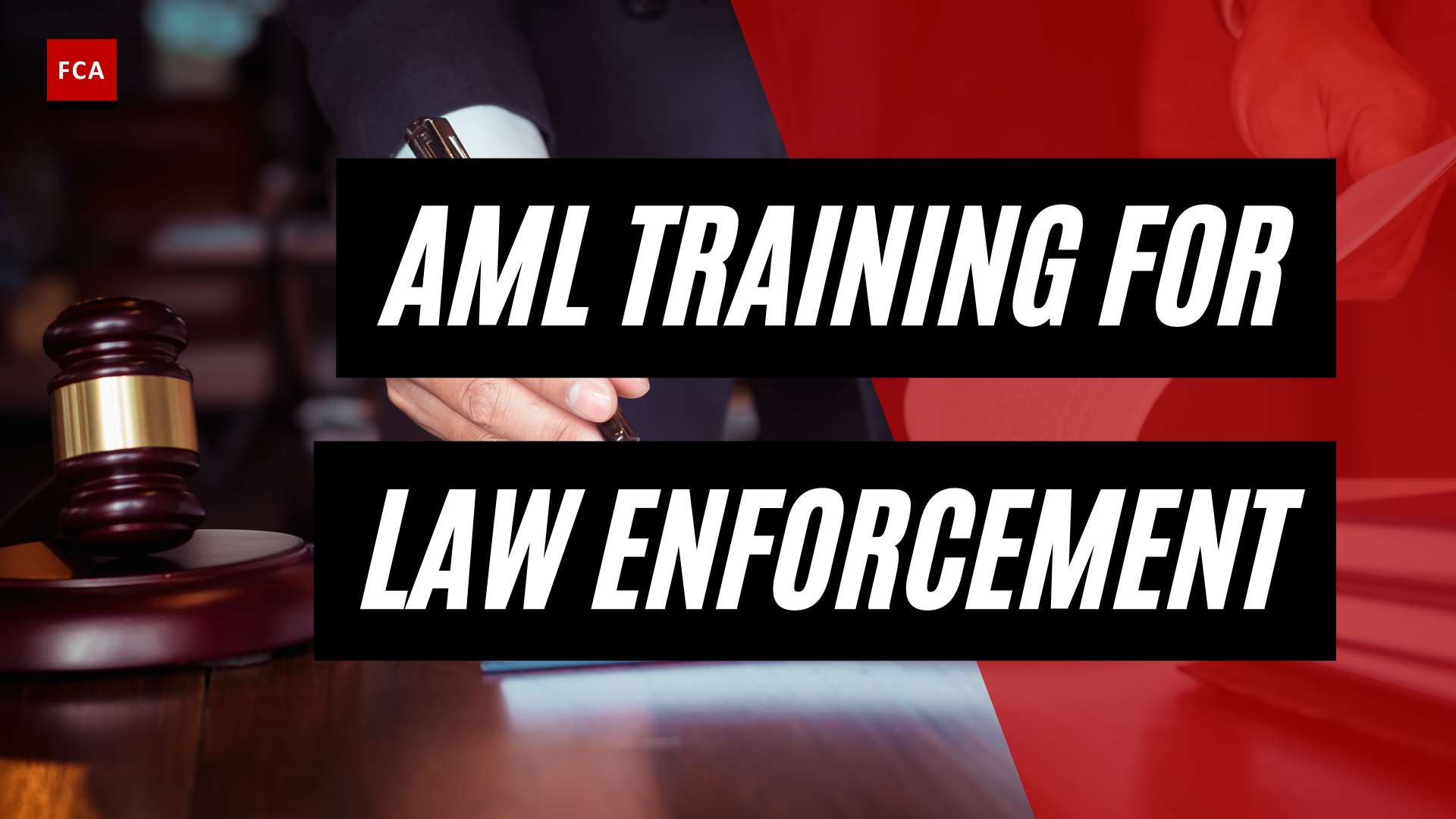The Impact of AML Regulations
Anti-Money Laundering (AML) regulations have had a significant impact on financial institutions, requiring them to enhance their compliance efforts and adapt to changing regulatory requirements. In this section, we will explore the key areas where AML regulations have made an impact on financial institutions: compliance costs, revised AML risk assessments, and the adoption of advanced technologies.
Compliance Costs and Financial Institutions
Financial institutions have experienced a substantial increase in compliance costs as a result of AML regulations. In a survey conducted by Deloitte, 89% of financial institutions reported that their compliance costs have increased post-2008 (Deloitte). These costs have risen due to heightened regulatory scrutiny, increased AML requirements, and the expectations surrounding fraud detection and prevention.
The financial services industry spends billions of dollars annually on AML compliance, with larger institutions investing multiple millions of dollars each year to meet regulatory requirements (Aware). For example, the average cost for a small bank can be around $3.8 million annually, while larger banks may spend up to $40-50 million per year (Financial Crime Academy). These costs encompass various aspects, including dedicated compliance teams, technology investments, training programs, and ongoing monitoring and reporting activities.
Revised AML Risk Assessments
AML regulations have prompted financial institutions to revise their AML risk assessments. Risk assessments are crucial for identifying, assessing, and mitigating the risks associated with money laundering and terrorist financing. Institutions must now conduct more comprehensive assessments to ensure compliance with regulatory requirements.
Financial institutions are required to evaluate the risks associated with their customers, products, services, and geographic locations. AML risk assessments help institutions allocate resources effectively and tailor their control measures to address specific risks. By conducting thorough risk assessments, institutions can enhance their AML programs and better protect themselves against potential money laundering threats.
Adoption of Advanced Technologies
To cope with the growing complexity of AML regulations, financial institutions have turned to advanced technologies to enhance their compliance efforts. Artificial intelligence (AI), machine learning, and robotic process automation are being increasingly adopted to automate processes, improve efficiency, and strengthen AML compliance programs.
By leveraging AI and machine learning, financial institutions can enhance their transaction monitoring systems, which are crucial for detecting suspicious activities and potential money laundering. These technologies can analyze large volumes of data, identify patterns, and flag potential risks, enabling institutions to focus their resources on high-risk areas.
The adoption of advanced technologies also allows financial institutions to streamline their regulatory reporting processes. Automation helps in generating accurate reports, reducing manual efforts, and ensuring compliance with reporting requirements in a timely manner.
Moreover, these technologies facilitate ongoing monitoring and risk assessment, enabling financial institutions to keep pace with evolving AML regulations and adapt their compliance programs accordingly. By embracing innovation, financial institutions can not only enhance their AML compliance capabilities but also improve cost efficiency and effectiveness in combating money laundering.
In summary, AML regulations have had a profound impact on financial institutions, necessitating increased compliance costs, revised risk assessments, and the adoption of advanced technologies. Financial institutions must continue to adapt and evolve their AML programs to meet regulatory expectations, mitigate risks, and protect themselves and the financial system from the threat of money laundering and terrorist financing.
Challenges in AML Compliance
Ensuring compliance with Anti-Money Laundering (AML) regulations poses various challenges for financial institutions. These challenges include the cost of compliance, the consequences of non-compliance, and the accountability of individuals within the organization.
Cost of Compliance
AML compliance can be a costly endeavor for financial institutions. Larger institutions, in particular, may spend multiple millions of dollars annually to meet regulatory requirements (Aware). The cost of implementing robust AML systems, conducting due diligence, and hiring specialized personnel all contribute to the overall expenses. In fact, 83% of financial institutions report that AML compliance cost increases are outpacing the growth in revenue, impacting their profitability (Aware).
Consequences of Non-Compliance
Non-compliance with AML regulations can have severe consequences for financial institutions. Regulatory bodies impose substantial penalties on institutions found to be in violation. For example, Deutsche Bank paid over $280 million in penalties for facilitating money laundering, and UBS was fined $500 million by the US Department of Justice for AML failures. These penalties not only have a financial impact but also damage the reputation and credibility of the institutions involved (Financial Crime Academy).
The consequences of non-compliance extend beyond financial penalties. Institutions may face operational disruptions, reputational damage, and loss of customer trust. These consequences can have long-lasting effects on the stability and success of the institution, making compliance crucial to maintaining a strong position in the market (Financial Crime Academy).
Accountability of Individuals
Regulators are increasingly focusing on holding individuals within financial institutions accountable for AML compliance failures. Executives, board members, and compliance officers can face personal liability, including fines and even criminal charges, for failing to prevent money laundering within their organizations (Financial Crime Academy). This shift underscores the importance of establishing a culture of compliance and ensuring that individuals in positions of responsibility are actively engaged in mitigating AML risks.
To address these challenges, financial institutions must allocate resources to maintain robust AML systems, implement effective training programs, and foster a culture of compliance throughout the organization. By proactively addressing the cost of compliance, understanding the consequences of non-compliance, and promoting individual accountability, financial institutions can navigate the complex landscape of AML regulations more effectively.
AML Regulations and Financial Institutions
Financial institutions play a crucial role in combating money laundering and other illicit activities. AML regulations have a significant impact on these institutions, requiring them to implement robust compliance measures and adhere to stringent regulatory requirements. In this section, we will explore the role of financial institutions, the regulatory requirements they face, and the overall impact of AML regulations on the banking industry.
Role of Financial Institutions
Financial institutions, including banks, credit unions, and other entities involved in financial services, play a vital role in the fight against money laundering and other financial crimes. They act as intermediaries between individuals, businesses, and the global financial system. By implementing effective AML measures, financial institutions help ensure the integrity of the financial system and protect themselves and their customers from illicit activities.
Financial institutions are responsible for conducting customer due diligence, monitoring transactions for suspicious activity, and reporting any suspicious transactions or activities to the relevant authorities. They are also required to maintain records and implement risk assessment processes to identify and mitigate money laundering risks. By fulfilling these responsibilities, financial institutions contribute to the detection and prevention of money laundering and the financing of terrorism.
Regulatory Requirements
AML regulations impose various obligations on financial institutions to prevent money laundering and other financial crimes. These requirements vary across jurisdictions but generally include:
-
Conducting customer due diligence (CDD): Financial institutions are required to verify the identity of their customers and assess the risk associated with their transactions. This involves collecting relevant information, such as identification documents, and applying risk-based approaches to determine the level of scrutiny required.
-
Transaction monitoring: Financial institutions must monitor customer transactions for any suspicious activity that may indicate money laundering or other illicit activities. This involves implementing transaction monitoring systems that analyze patterns and detect anomalies in customer behavior.
-
Reporting suspicious transactions: If financial institutions identify any suspicious transactions or activities, they are obligated to report them to the appropriate regulatory authorities. These reports help law enforcement agencies investigate and take appropriate action.
-
Recordkeeping: Financial institutions are required to maintain records of customer transactions and related information for a specified period. This facilitates audits, investigations, and regulatory reviews.
Impact on Banking Industry
The implementation of AML regulations has had a significant impact on the banking industry. Financial institutions have incurred substantial compliance costs to meet the regulatory requirements. According to Deloitte, 89% of financial institutions reported increased compliance costs post-2008, driven by heightened regulatory scrutiny, AML requirements, and expectations around fraud detection and prevention.
The financial services industry spends billions of dollars annually on AML compliance, with the United States alone accounting for nearly 10% of the nation’s total anti-money laundering costs. These costs include investments in technology, staff training, and ongoing monitoring and reporting efforts.
To meet the evolving regulatory landscape, financial institutions have been embracing advanced technologies such as artificial intelligence (AI), machine learning, and robotic process automation. These technologies enhance AML compliance and fraud detection capabilities, enabling more efficient and effective monitoring of transactions and the identification of suspicious activities.
While the implementation of AML regulations has undoubtedly increased the compliance burden on financial institutions, it has also strengthened the overall integrity of the financial system. By deterring and detecting illicit activities, AML regulations contribute to maintaining the stability and trustworthiness of the banking industry.
In summary, financial institutions play a crucial role in AML compliance, adhering to regulatory requirements to prevent money laundering and other financial crimes. The impact of AML regulations on the banking industry is significant, resulting in increased compliance costs, adoption of advanced technologies, and a greater focus on risk management. Despite the challenges, these regulations contribute to the overall integrity of the financial system and help protect both the institutions and their customers from illicit activities.
International AML Regulations
To combat the global issue of money laundering and terrorist financing, international organizations and regulatory bodies have established frameworks and guidelines that shape Anti-Money Laundering (AML) regulations around the world. In this section, we will explore three significant international AML regulations: the role of the Financial Action Task Force (FATF), European Union AML Directives, and the Bank Secrecy Act in the United States.
The Role of FATF
The Financial Action Task Force (FATF) plays a vital role in the development and implementation of AML regulations worldwide. Established in 1989, the FATF evaluates countries on their anti-money laundering and counter-terrorist financing efforts. The recommendations and guidelines set forth by the FATF heavily influence national and international AML policies. As of 2022, the FATF has 39 member countries.
European Union AML Directives
The European Union (EU) has been at the forefront of implementing AML regulations within its member states. The EU’s Anti-Money Laundering Directive was first introduced in 1991 and has since undergone several updates, with the most recent ones in 2015 and 2018. The EU directives require financial institutions to implement measures to prevent money laundering and terrorist financing. These measures include customer due diligence, recordkeeping, and reporting requirements. The EU AML directives have had a significant impact on shaping AML regulations across Europe (Fintech Global).
Bank Secrecy Act in the United States
In the United States, the Bank Secrecy Act (BSA) is a key piece of legislation in the fight against money laundering. Established in 1970, the BSA remains one of the most important tools to prevent money laundering and terrorist financing. The BSA imposes recordkeeping and reporting requirements on financial institutions to help detect and deter illicit activities. It requires banks to establish and maintain robust AML programs and report suspicious transactions to the appropriate authorities. The BSA has undergone continuous development and modifications over time to provide regulatory agencies with effective anti-money laundering tools.
By understanding and adhering to these international AML regulations, financial institutions can play a crucial role in combating money laundering and terrorist financing. These regulations are designed to establish a strong framework that promotes transparency, due diligence, and reporting, thus helping to safeguard the integrity of the global financial system.
Technology in AML Compliance
As anti-money laundering (AML) regulations continue to evolve and become more complex, financial institutions are turning to technology to enhance their compliance efforts. The adoption of artificial intelligence (AI) and machine learning is playing a crucial role in revolutionizing AML compliance and helping businesses combat money laundering more effectively.
Adoption of AI and Machine Learning
Financial institutions are increasingly investing in advanced technologies such as AI and machine learning to enhance AML compliance and fraud detection capabilities. These technologies can automate processes like transaction monitoring, regulatory reporting, and risk assessment, reducing manual efforts and errors. By analyzing vast amounts of data, AI and machine learning algorithms can detect patterns and anomalies that may indicate suspicious activities, enabling financial institutions to identify potential money laundering risks more efficiently.
AI and machine learning can also improve the accuracy and effectiveness of customer due diligence processes. These technologies can automate identity verification and screening against sanctions and Politically Exposed Persons (PEPs), ensuring that financial institutions comply with regulatory requirements while streamlining the onboarding process. By leveraging AI-powered AML scanning solutions, businesses can enhance their customer identity verification procedures and maintain up-to-date profiles.
Challenges and Integration
While the adoption of AI and machine learning in AML compliance offers significant benefits, financial institutions may encounter challenges during implementation. One of the main challenges is ensuring the accuracy and reliability of the algorithms. It is crucial to continuously train and fine-tune the models to stay ahead of evolving money laundering tactics and regulatory requirements. Additionally, financial institutions must ensure that these technologies are integrated into their existing systems and workflows seamlessly. This integration may require collaboration with technology providers and internal teams to ensure a smooth transition.
Innovating to Combat Money Laundering
Innovative technologies are continuously being developed to combat money laundering and meet the demands of evolving AML regulations. Financial institutions are leveraging AI and machine learning to enhance their AML compliance programs, automate processes, and improve detection accuracy. For example, AI-powered transaction monitoring systems can analyze large volumes of data in real-time, flagging suspicious transactions for further investigation. These technologies are designed to adapt and learn from new trends and patterns, making them effective tools in the fight against money laundering (MetaMap).
As technology continues to advance, financial institutions must stay informed about the latest developments in AML compliance. By embracing innovative solutions and leveraging AI and machine learning technologies, businesses can strengthen their AML programs, reduce compliance risks, and contribute to the global efforts in combating money laundering.
To learn more about the impact of AML regulations on financial institutions, explore our articles on aml regulation compliance for businesses, aml compliance costs for businesses, and aml compliance challenges for businesses.








